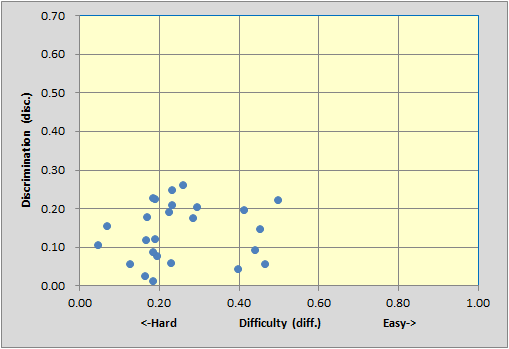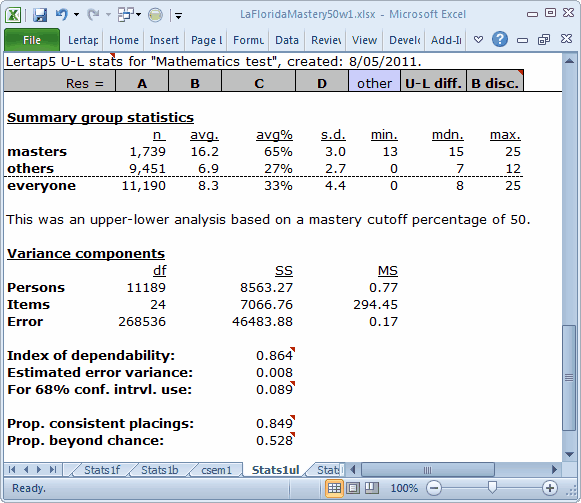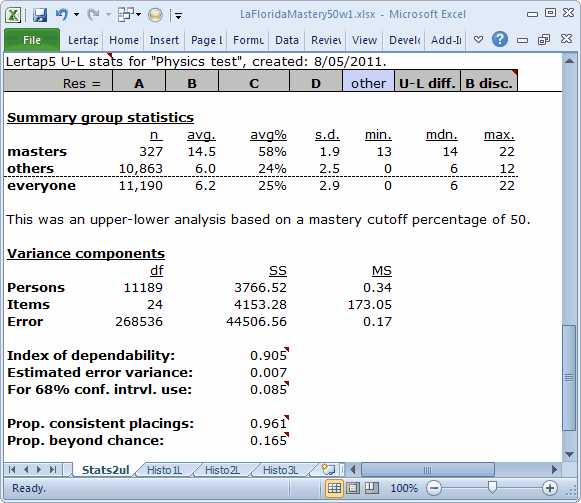Sample results, La Florida
The scatterplots of item statistics, diff. and disc., looked like this:


The top graph is for the Math subtest; Fisica is at the bottom.
The math subtest has some hard-working items; many of them have disc. values above 0.30. The reliability of this test, the coefficient alpha value found in the Stats1f report, was 0.77.
The physics subtest, "Fisica", had many items with disc. values below 0.10, and none above 0.30. Its reliability was just 0.51.
These are marginal reliability figures, especially when it comes to the Fisica subtest.
But what about the mastery test results? Each of these tests has a cut-off score of 50%.
The Statsul reports will have the relevant information. Because there are two subtests, there will be two such reports.
The Stats1ul report has results for the Math subtest:

The Stats2ul report has results for Fisica.

In terms of pass rates, 1739 applicants (15.5%) made it over the bar on the Math subtest, with far fewer, just 327 (3%), topping the Fisica items.
On the Total score, 851 applicants had a combined Math plus Fisica score at 25 or above, for a pass rate of about 7.5%. (Note: a histogram of the Total score was used to determine this number.)
Of interest are the Prop. consistent placings figures for the two subtests. Fisica has particularly weak reliability, but a seemingly (almost) remarkable Prop. consistent placings value of 0.961.
Of course this would not strike you as remarkable had you read this paper about cut-scores and such. What's happened, basically, is that the cut-score on the Fisica test is quite removed from the average test score.
For something interesting to do in your spare time, whiz ahead to the next topic.
